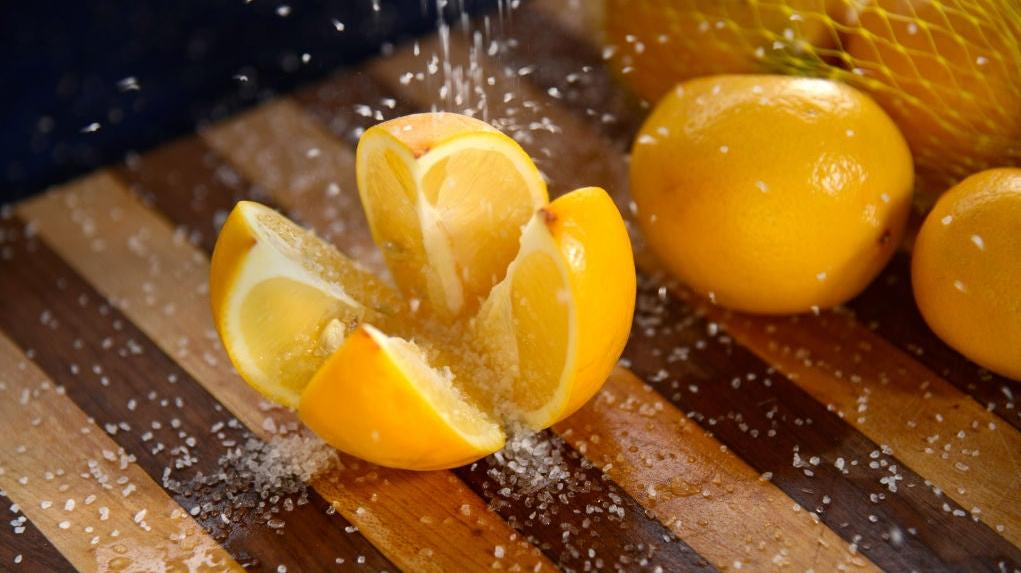Are You A Stickler About Salt?
When it comes to which type of salt to use in recipes, opinions can differ wildly.
This morning, The Washington Post announced a quietly radical change to all the recipes published to its Voraciously food vertical: going forward, recipes will call for either fine sea salt or table salt, rather than defaulting to kosher salt like much of the food media landscape does. For those of you who don't do much cooking or baking, we swear this is a significant and newsworthy change of protocol! Read on to find out why.
As we've discussed, the type of salt you use in recipes matters. Texture is a big reason for this, as it impacts the final dish in multiple ways. We explained it thusly in our own article on the subject:
Salts vary in texture—think of how much coarser kosher salt is compared to fine table salt—meaning a tablespoon of one may not be equivalent to a tablespoon of the other. Weighing ingredients helps alleviate this disparity, but if a recipe gives its measurements in volume, follow the specified salt, if possible.
Beyond that, the larger surface area of kosher salt versus table salt means the individual crystals are easier to distribute evenly across the food as you sprinkle, meaning they melt over food more evenly too. So, a lot of chefs default to kosher salt, and that's why chefs' recipes are subsequently written with the assumption that you'll do the same.
But, as the Washington Post explains, the term "kosher salt" isn't as specific as it seems, and it can lead to confusion among people who aren't trained culinary professionals. Though leading brands like Diamond Crystal and Morton each make a kosher salt product, the two are not created equal; they vary in texture and size, so two people following the recipe to the letter will still achieve different results.
"The amount of salt can make or break a dish, and we don't want to leave anything to chance," writes food reporter Becky Krystal, explaining Voraciously's reasoning for the salt swap. She goes on:
Fine sea salt and table salt boast a similar texture of small grains so that they are about equivalent in volume. They are also very close in terms of the amount of sodium. That makes them largely interchangeable, a flexibility we think will be helpful to readers, as iodized table salt continues to be the salt of choice for a lot of home cooks.
We at The Takeout specify kosher salt most often in our recipes, though Voraciously's reasons for shifting away from that variety are well-considered and understandable. For our part, in thinking about what we can do to best serve our readers, more than anything we want the recipes we publish to be maximally useful (who doesn't?). If a recipe allows no flexibility to accommodate whichever ingredients you have available to you, it's not going to be a recipe you return to again and again (the ultimate endorsement). Including salt in a recipe can be crucial, as Krystal says, but we don't want you to worry too terribly much about which kind you've got on hand. Salt is salt, after all, no matter where it comes from or where you buy it.
But maybe you disagree. Maybe your kitchen-dampened fingers have been coated in ultra-fine table salt one too many times and you only abide the coarser, less adherent grains of kosher salt. Maybe you are so enamored with Maldon flakes that you incorporate them into your cooking as often as you sprinkle them on top of finished cookies and cupcakes. (Sounds like an expensive habit, but you do you.) Or maybe, like me, you keep coarse kosher salt on hand for all applications, then just use a mortar and pestle to get the desired crystal size whenever you need something finer. Is that... bad? Forgive me, but I just love using my mortar and pestle. (If you've got any cloves or peppercorns that need a good pestlin', come see me!)
Sound off with your salt thoughts, everyone, and as always, be respectful of any opinions that differ from your own. As long as we all agree that salt grinders are bullshit.
